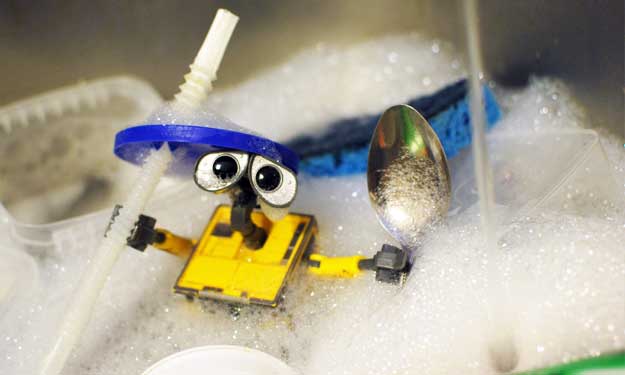Dishwasher Cleaning Tips

Dishwasher Cleaning Tips.
How to Get the Dishwasher Clean
It may sound odd, but your dishwasher needs cleaning, too! Despite washing dishes daily, dishwashers accumulate grease, food bits, and soap scum over time, which can lead to bad odors, poor performance, and even bacteria buildup.
Regularly cleaning the dishwasher keeps it running efficiently and smelling fresh.
Why Clean Your Dishwasher?
- Residue buildup: Food particles, grease, and soap scum settle in corners and seals, creating grime.
- Odors: Warm, moist environments can foster bacteria.
- Better performance: A clean dishwasher works more effectively.
How to Clean the Dishwasher
Follow these steps for a quick and easy clean:
Scrub the Door and Seals
Use a small brush, like an old toothbrush, and hot soapy water to clean grooves and rubber seals. Focus on the bottom and hinges where grime collects.
For tough spots, use a soft abrasive cleaner like Soft Scrub®.
Clean the Dishwasher Interior
Use a sponge with hot soapy water to wipe the inside door and any corners with stuck-on food. Check the drain area (under the bottom rack) for debris.
Deodorize with Vinegar
Place a dishwasher-safe cup of white vinegar on the top rack. Run an empty cycle with the hottest water setting. Vinegar removes grease, sanitizes, and eliminates odors.
Brighten with Baking Soda
Sprinkle 1 cup of baking soda on the bottom of the dishwasher. Run a short, hot water cycle to freshen and remove stains.
Tackle Mineral Stains
For hard water or rust stains, use rust-removing products found in the laundry or home improvement section. Run an empty cycle after applying the product to the soap dispenser and dishwasher bottom.
Dishwashing Tips
- Scrape, don’t pre-wash: Skip pre-washing, but scrape off food residue.
- Smart loading: Avoid overcrowding, and ensure spray arms can reach all surfaces.
- Use hot water: Water at 130°F or hotter ensures proper detergent activation and sanitization.
- Choose the right detergent: Powder works better than gel, especially in hard water. Gels can leave residue, cause dispenser clogs, and damage seals.
- Rinse aids: Use a rinse aid to prevent spots, especially in areas with hard water.
Troubleshooting Common Dishwashing Issues
Cloudy Glassware
If vinegar removes the cloudiness, it’s hard water deposits – use more detergent.
If it doesn’t, it may be permanent etching – use less detergent and avoid pre-wash cycles.
Water Level
Ensure water covers the heating element during the wash cycle for optimal performance.
Spots and Film
A rinse aid like Jet-Dry® can help. Solid rinse aids are easy to monitor and last for multiple cycles.
Final Thoughts
Routine cleaning and proper maintenance go a long way toward keeping your dishwasher in top shape. It not only improves cleaning results but also extends the lifespan of the appliance. Take care of your dishwasher, and it will take care of your dishes!



